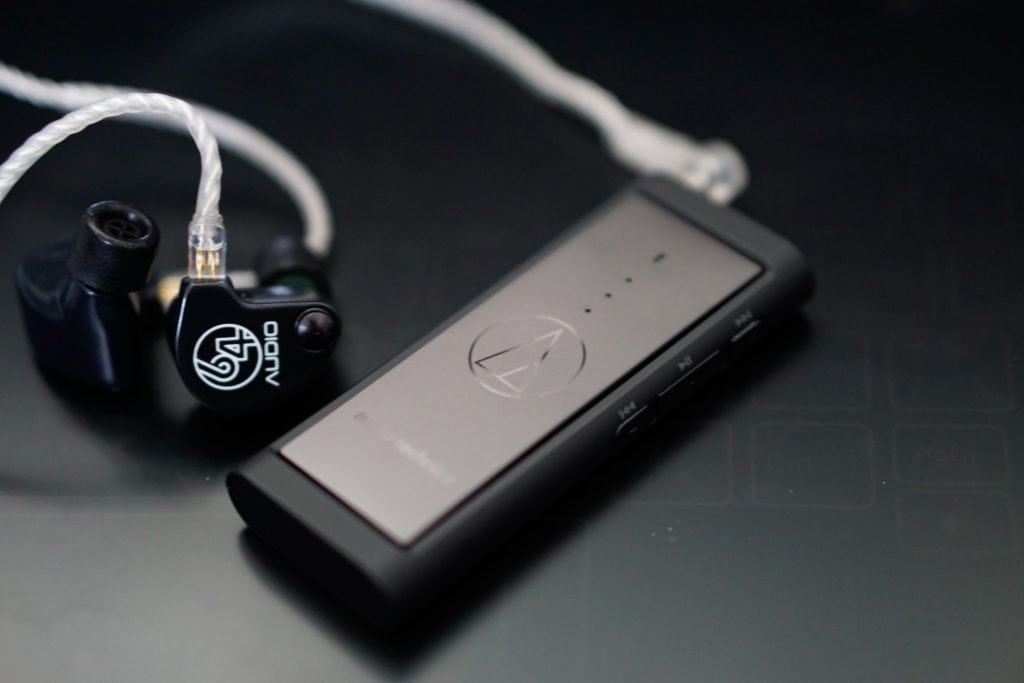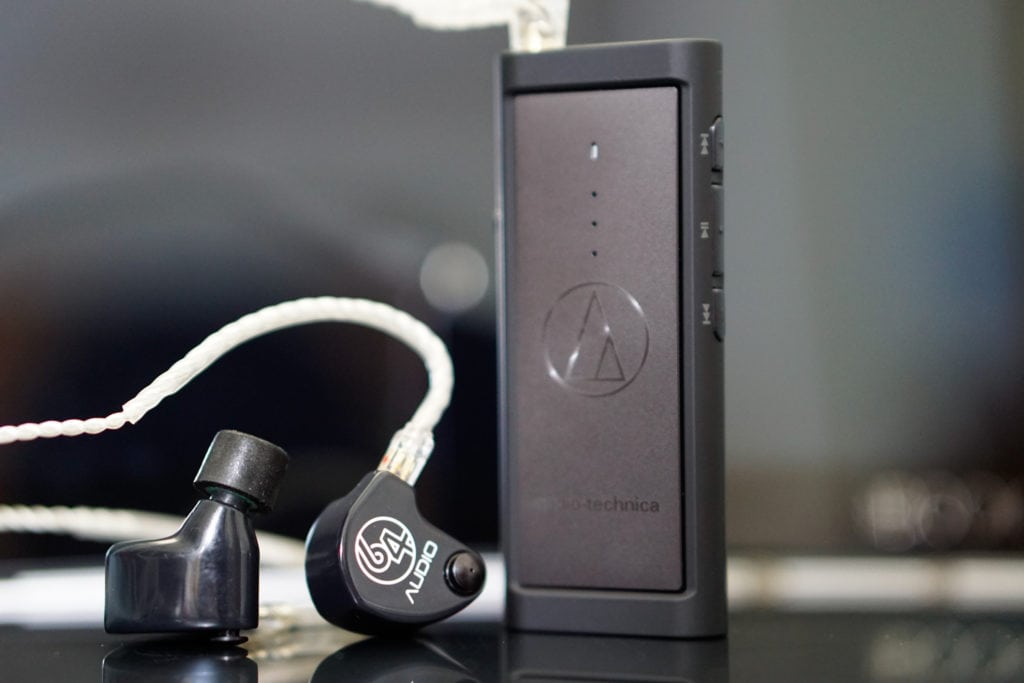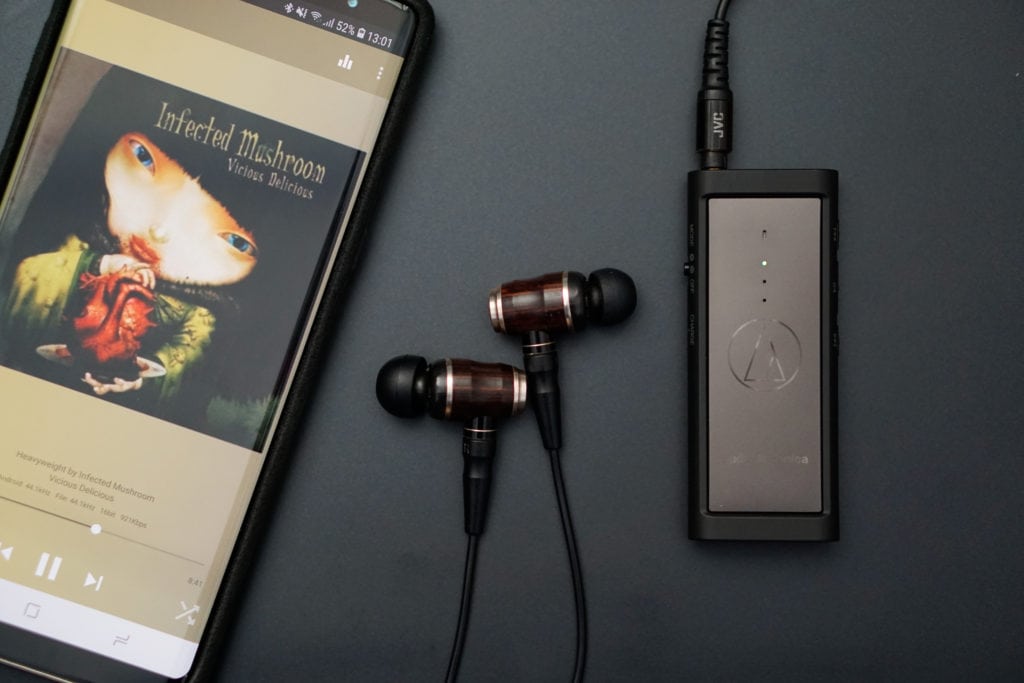
As more phones are removing headphone jack nowadays, people are starting to go with wireless headphones. However, for some of us that already have a wired headphones that we love, a Bluetooth receiver with more sophisticated DAC and amp section could be a good solution. Audio Technica has been in this market since at least 2014 with their AT-PHA50BT. This product I featured here, is AT-PHA55BT, the successor that released late last year in Japan.
Personally, I like the convenience to disconnect myself from wire between my phone and my headphones, so lately my collection of Bluetooth receiver has been growing. The AT-PHA55BT is one of my favorite and perhaps have the most unique character that separate itself from the rest.

The AT-PHA55BT is equipped with Bluetooth 4.2, an ES9118 SoC from ESS Technology and have a maximum output power of 50 mW per channel at 16 ohms, 25 mW per channel at 32 ohms and 2.5 mW per channel at 300 ohms. It’s not very powerful, but is more than sufficient for driving any IEM, which I prefer to use on the go. For IEM, the more important thing is noise level, which is problematic especially for low impendance-high sensitivity one. This is a problem I experienced with XB10 from Astell & Kern and Bluewave Get, as they got audible hiss when driving U12 from 64 Audio (my daily driver). I would say that the AT-PHA55BT noise level is certainly pretty low, to the point that it is inaudible with my U12.
However, there is an instance when a hiss could be heard, and that is when the AT-PHA55BT went on standby mode after a few minutes of idling. The moment before it goes into standby, there would be a short period of time when the amp activated itself producing audible hiss before going into complete silence. It’s a weird issue, as there were no hiss when music is playing, pausing or even right after stopping, there is also no hiss from a track that has a silent moment in it. So I think it was a bug in software that perhaps activated the amp section somehow right before entering standby mode. Unfortunately, the AT-PHA55BT doesn’t seem to support firmware upgrade, so there won’t be a chance for this to be fixed.
The design of AT-PHA55BT is quite appealing to me, it’s a bit longer when compared to similar device, while it is thinner than most of them, it’s ended up with a bigger footprint. The build quality is great, aluminum body that is very solid and everything is precisely aligned, no crackling whatsoever. There is 3 tactile buttons on the right side, which is multi function buttons depending to either press or hold, for example a single press on + button will raise the volume one level, while holding that button will trigger next track.
The left side have a switch, which goes from Off, to two different mode. The A mode will be suitable to drive dynamic IEM, while B mode will be suitable to drive balance amarture (BA) IEM, more on this later. While at the same side, there is a micro-USB connector for charging. The top have a single-ended 3.5 mm mini jack, while there is nothing on the bottom. The front has a microphone and 3 LED indicator to display connection status, battery level, etc.
Included with the package is a short micro-USB cable and a clip that attached to the body of the receiver like a case. If I have to complain, then the clip is quite like an afterthought, it’s filmsy, can’t clip very well and add a considerable thickness to it.
The feature set of AT-PHA55BT is certainly more limited compared to the competitor. For codecs, it only has support for aptX and didn’t support either aptX HD or LL. This is a stark contrast compared to the other player in this arena like Radsone ES100, Bluewave Get and FiiO BTR3 which all have aptX HD. Fortunately, it does have LDAC support for high resolution transmission.
Another limitation is that it could only connect to one device at a time. There is also no way to enter pairing mode manually, you have to disconnect from one device before you can connect it into any other device. The 32-step volume control is sufficient in most cases. Volume control can also be synced with the phone if your phone supported it (it was an option to enable on my Note8), so you aren’t limited to adjust the volume on the receiver itself.
The battery life of this is pretty good, I never got the claimed 8 hours of continuous use, but it is easily hit 5 to 6 hours. Other features you might miss compared to other receiver includes: no USB DAC capability and no application support.

Now let’s get into sound quality. The AT-PHA55BT has two different mode that do sounds a bit different. While they claimed to have one mode for dynamic driver and the other for BA, I’m not seeing any benefit to use one mode over another unless I drive something really heavy.
First, I’ll go with the B mode, which is my favorite. This is suitable for BA driver, and weirdly, on the same volume level, the B mode sounds louder than the A mode. I’m under the impression that something for sensitive BA should be quieter (like a low gain), but it is not the case. Still, it is clean and free of hissing on my U12, so it is a good sign.
The sounds of the B mode can be explained as spacious and warm, which is something I admire about this little receiver. The soundstage is just wide, deep, and quite holographic. None of my other receivers can produce this kind of soundstage and not even my trusty Onkyo Granbeat DAP-phone.
In general, the B mode sounds pretty warm. The bass, while possibly not extending to the lowest end, still have a good punch to it, just don’t expect a lot of vibrating sub-bass. The midrange is quite full bodied and is pleasing to listen to, the warmth add sweetness into the vocal which I liked. And the treble, while not sparkling much, still have a pretty good presence and airiness. There is no sibilant peak to speak of, unless you are driving something very bright.
Now on to the A mode, which is for dynamic driver. The sound is still pretty similar, but this lost the spaciousness quite a bit, making it less 3d-like. Another thing that changes is the warmth, this mode make it sounds a bit dry and possibly add a little sparkle into the upper-mid area. Overall, I do prefer the B mode but that doesn’t mean the A mode doesn’t have the advantage.
While in the same volume level, the A mode is quieter, but their maximum volume is about the same. The A mode also have a better control, by that, I mean it is less likely to clip when driving heavier load. For dynamic driver IEM though, like my FX850, it was driven pretty well with the B mode, so I don’t see the need to go into the A mode.
However, when I tested with (unrealistic) load to MrSpeakers Ether 2 planar magnetic headphones, it is evident that the B mode start to clip sooner than the A mode. It doesn’t get very loud with Ether 2 and even the A mode still clip at the highest volume, but less so than the B mode. I can see the advantage of using A mode when driving full size headphones, but for IEM, regardless of driver type, the B mode is sufficient and sounds better in my opinion.
Conclusion
The AT-PHA55BT might not be the most fully featured Bluetooth receiver out there. But the unique take of the sound signature is what made this little device special and earned my favorite among the other receiver I had. However, it is possibly harder to justify the $129 price tag compared to FiiO BTR3 that is more fully featured at $69 or even the Radsone ES100 at $99. That said, the build quality is still the best out of the bunch and the unique take of the sound make it a worthy collection.
You can support my blog by buying the aforementioned products using my Amazon affiliate links:
Audio Technica AT-PHA55BT
FiiO BTR3
Radsone EarStudio ES100
Astell & Kern XB10
Bluewave Get
No comment yet